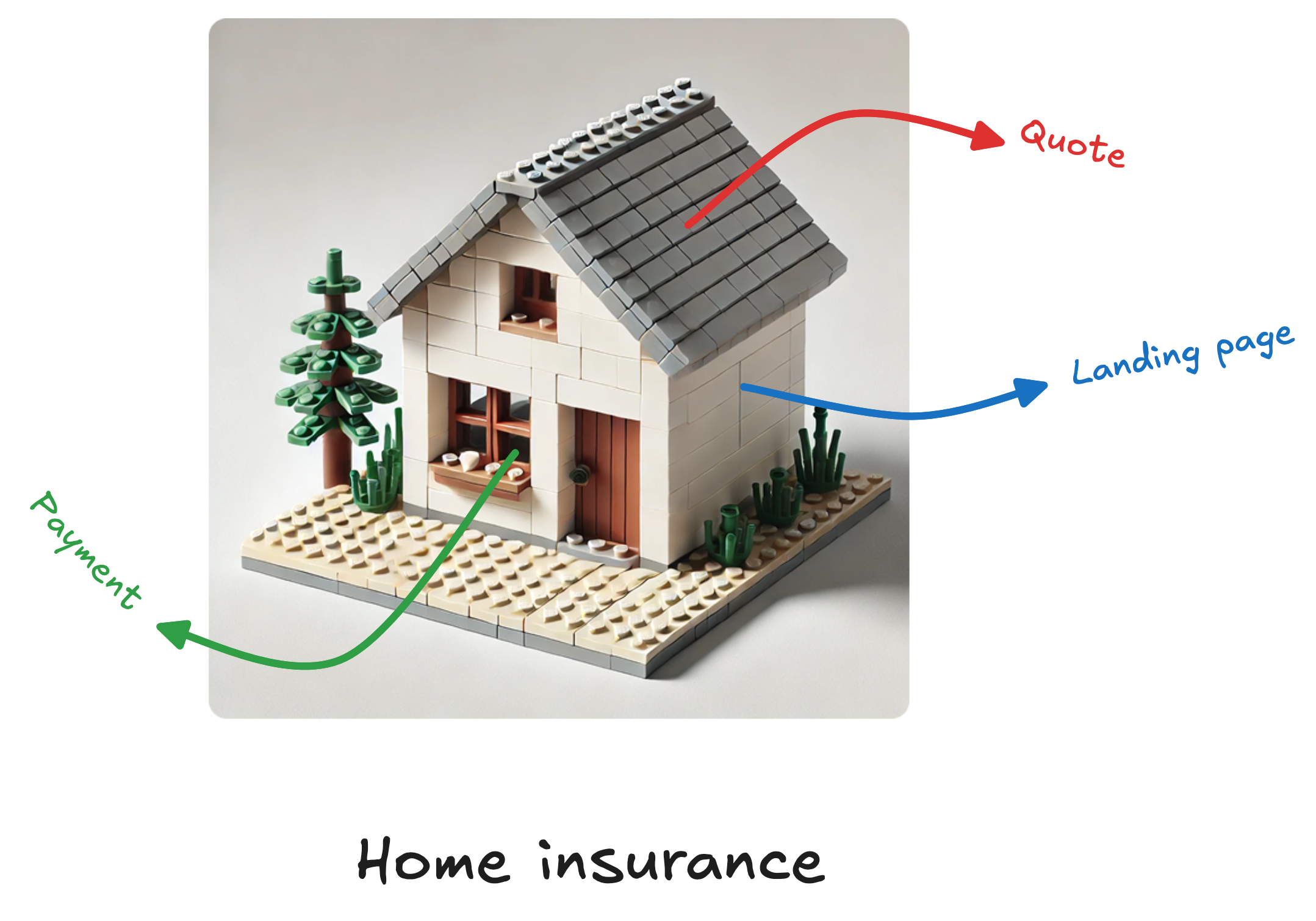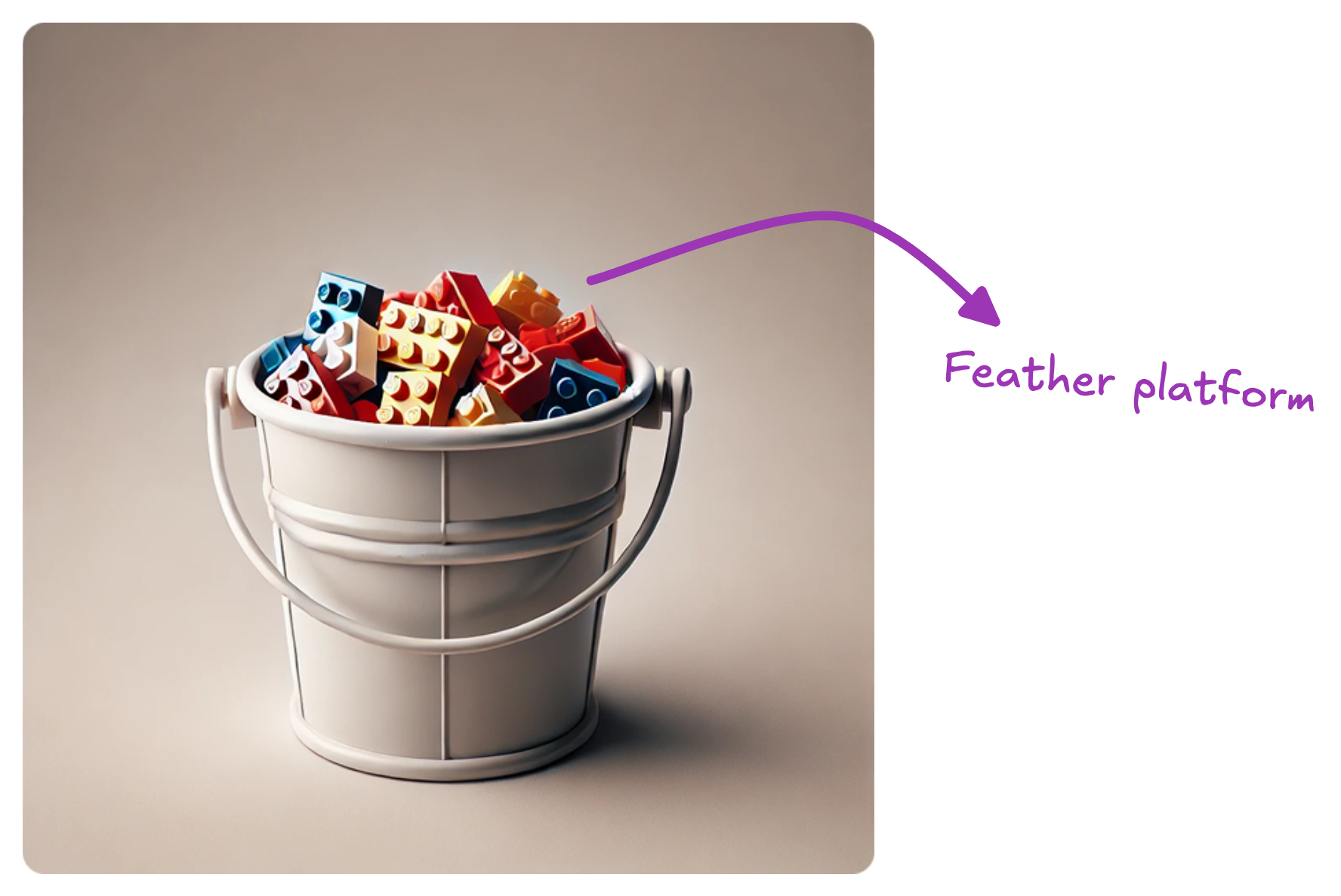Building a platform
At Feather, you often hear the term "building a platform." This concept represents our approach to creating technology and products with maximum reusability.
I like to explain this using a Lego block allegory. Lego blocks represent the core components we use to build our products, such as questionnaires, quote screens, landing pages, etc.
The product team at Feather is responsible for building the Lego blocks. The marketers or vertical owners use these Lego blocks to create new verticals; claims flow, landing pages, etc.
The platform is the combination of the moving pieces used to release and maintain a vertical.
What does building a platform mean?
When we say we’re building a platform, we mean we are designing modular components (Lego blocks) that can be reused across various contexts. This is to improve efficiency, consistency, and scalability in our operations and product offerings. Here’s an example to illustrate this concept:
Imagine launching a new insurance vertical, such as bike insurance in Spain. The process might look like this:
- Underwriting Data Collection: A questionnaire collects necessary information from the user.
- Quote Display: The system generates and displays a quote with pricing options.
- Account Creation: The user provides their details, such as name and email.
- Payment Processing: The user completes the payment to finalize the process.
Each step in this process is built using independent, reusable modules—our “Lego blocks”—that can be assembled to create a complete user journey.
Some modular components - “Lego blocks”
- Questionnaire Builder:
- We developed an internal tool that functions like Typeform but is customized to our specific needs.
- This tool allows us to create tailored questionnaires for data collection, such as the underwriting step or additional data gathering.x§
- Quote Generator:
- A customizable module that displays pricing options based on the information provided in the questionnaire.
- Account Creation Module:
- A standardized component that handles user account creation.
- Payment Processing:
- Another modular component that handles payments and integrates seamlessly into the user flow.
- Task Engine:
- A system for requesting asynchronous information from users after account creation. This tool allows non-technical teams, such as operations, to create and manage tasks without developer involvement.
By using these modular components, creating a new signup flow for any insurance vertical becomes a matter of assembling the appropriate “Lego blocks” rather than building everything from scratch.
This allows us to release new verticals in a couple of days instead of weeks.
Developing the platform - Creating new “Lego blocks”
The process of creating new Lego blocks can be described as follows:
- Start Specific: When addressing a new problem, we begin with a specific solution.
- Identify Patterns: As we repeatedly encounter similar needs, we identify opportunities to create a reusable component.
- Build for Reusability: We design and develop generic solutions that can be applied across multiple use cases.
This approach ensures that as we grow and expand, we don’t constantly reinvent the wheel. Instead, we’re building a scalable and efficient platform.
Empowering teams
Why are we so obsessed with building a platform? We believe that people closer to the problem space are the best fit to come up with the best solution. And for that we need to empower all teams—from product to insurance to operations—to leverage technology without requiring deep technical expertise. Developers are focusing on delivers the “Lego blocks,” while other teams assemble these blocks to create new products and services.
Closing words
Building a platform at Feather means creating reusable, modular components that make our technology adaptable and scalable. By following this philosophy, we can respond quickly to new opportunities, maintain consistency, and ensure long-term efficiency. This approach is not just about technology; it’s a mindset that influences how we operate and innovate across the company.

